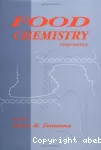Adresse
Infodoc : Réseau des bibliothèques et centres de documentation d'AgroParisTechFrance
contact

Catégories
|
RAMEAU , Nom commun , Aliments naturels -- Industrie et commerce
Aliments naturels -- Industrie et commerceSynonyme(s)Aliments biologiques ;Produits biologiques (aliments) Produits naturels (aliments)Voir aussi :Relation(s)
|
Documents disponibles dans cette catégorie (7)
 Ajouter le résultat dans votre panier
Visionner les documents numériques
Faire une suggestion Affiner la recherche Interroger des sources externes
Ajouter le résultat dans votre panier
Visionner les documents numériques
Faire une suggestion Affiner la recherche Interroger des sources externes
 Livre22 EUR
Livre22 EUR978-2-7489-0170-21 vol. (428 p.)
1 vol. (428 p.)Prix : 22 EUR ISBN : 978-2-7489-0170-2 
 Livre15 EUR
Livre15 EUR979-10-92636-22-21 vol. (190 p.)
1 vol. (190 p.)Prix : 15 EUR ISBN : 979-10-92636-22-2 
 Livre
Livre
 Livre
Livre978-0-8247-9691-41069 p.
1069 p.ISBN : 978-0-8247-9691-4 
 Mémoire2017 20171 vol. (50 p.)
Mémoire2017 20171 vol. (50 p.)
1 vol. (50 p.)
 Livre
Livre978-94-007-7926-61 vol. (xvi, 489 p)
1 vol. (xvi, 489 p)ISBN : 978-94-007-7926-6







